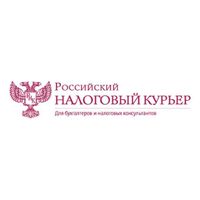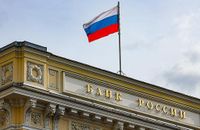On Friday, April 25, 2025, the Board of Directors of the Bank of Russia decided to maintain the key interest rate at 21%, marking the fourth consecutive meeting where no changes were made. This decision aligns with analysts' expectations and reflects ongoing concerns about inflationary pressures within the country.
Despite some signs of easing inflation, the Central Bank has opted for a cautious approach, waiting for more convincing evidence of a decline in inflation before considering any adjustments to the key rate. Elvira Nabiullina, the head of the Central Bank, emphasized the need for a sustained reduction in inflation and inflationary expectations before any rate cuts can be contemplated.
In the press release following the meeting, Nabiullina described the current inflationary landscape as stable, albeit high. "Inflationary expectations of the population, businesses, and financial market participants have not changed significantly since March," she stated. This persistence in expectations has impeded a more rapid decline in inflation rates.
According to the Central Bank's forecast, annual inflation is projected to decrease to 7-8% in 2025, with a return to the target level of 4% expected by 2026. The regulator indicated that it would maintain tight monetary conditions to facilitate this goal, which suggests a prolonged period of stringent monetary policy.
Analysts have noted that while the Bank of Russia's decision may not significantly impact lending rates in the short term, there are expectations of a gradual decline in loan rates as economic conditions evolve. Vladimir Evstifeev, Head of Analytical Management at Zenit Bank, remarked that banks are already reducing the profitability of medium- and long-term deposits, as well as preemptively lowering rates on consumer lending due to a slowdown in credit growth.
Despite these adjustments, many experts believe that the current high interest rates will remain a significant burden on borrowers. The average rate on unsecured cash loans has recently shown a slight decrease; however, it still hovers near multi-year highs, making loans less accessible for average consumers.
In terms of mortgage lending, the situation remains challenging. According to the Analytical Center of DOM.RF, mortgage issuance fell by 49% in quantity and 42% in value in the first quarter of 2025 compared to the previous year. The bulk of this decline is attributed to market programs, which have seen a staggering 64% drop in quantity and a 74% decrease in volume. Although there has been a slight reduction in mortgage rates, they remain prohibitively high for many potential borrowers.
Looking ahead, various financial institutions have projected when the Central Bank might begin to lower the key rate. For instance, analysts at SberCIB Investment Research suggest that the Central Bank could initiate a rate cut as early as June 2025, contingent on continued improvements in inflation rates and economic stability. Other banks, such as Zenit and Bank Saint Petersburg, have indicated more conservative timelines, with potential cuts expected later in the year.
As borrowers navigate this landscape, many are encouraged to approach new loans with caution. Mikhail Goldberg, Head of the Analytical Center of DOM.RF, advised that potential borrowers should consider their needs carefully and avoid impulsive purchases on credit given the current high rates. He noted that those seeking to improve their housing conditions might still opt for mortgages, but they should plan for future refinancing opportunities as rates potentially decrease.
High interest rates have also increased the payment burden for many Russians. Over the past year, the absolute amount of overdue payments on mortgages has surged by approximately 75%. However, the overall share of overdue debt in the retail portfolio remains relatively low, indicating that while the situation is concerning, it is not yet critical.
As the Central Bank continues to monitor economic indicators, the upcoming June meeting is expected to provide further insights into the future trajectory of monetary policy. Analysts remain vigilant, recognizing that external factors, including geopolitical tensions and global economic conditions, will heavily influence the Bank's decisions moving forward.
In conclusion, the Bank of Russia's decision to maintain the key rate at 21% reflects a careful balancing act between controlling inflation and supporting economic growth. While some analysts anticipate a gradual easing of rates in the coming months, the current environment remains challenging for borrowers, who must navigate high costs and uncertain economic conditions.


